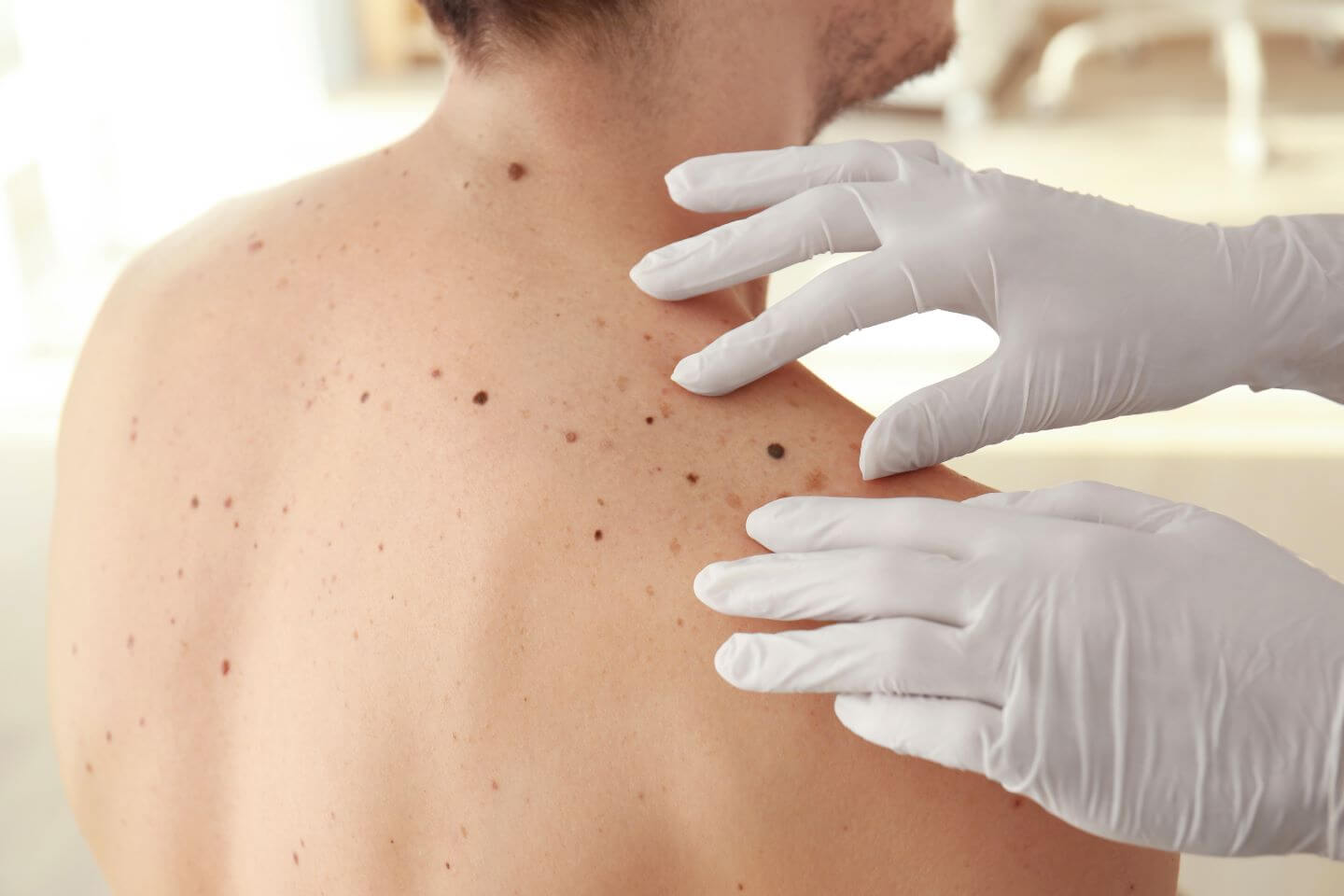When it comes to skin cancer, melanoma may be one of the least common types, but it accounts for the majority of skin cancer-related deaths. For this reason, it’s one of the most well-known types of skin cancer. According to Dr. Daniel Condie of U.S. Dermatology Partners in Plano, Grapevine, and Sherman, Texas, “Melanoma has a bad reputation that is well deserved. While it can be one of the deadliest forms of skin cancer, the good news is that melanoma is also treatable when diagnosed in the early stages. The best way to receive an early diagnosis is to check for warning signs of melanoma frequently and visit with your dermatologist at least once each year.” In this blog, Dr. Condie explores the warning signs of melanoma and the importance of regular screenings.
Melanoma: A Primer on the Deadliest Skin Cancer
Melanoma is a form of skin cancer that begins in the pigment-producing melanocyte cells. In most cases, this form of cancer occurs as a result of frequent or prolonged exposure to the sun’s ultraviolet (UV) rays. However, a small percentage of people may develop melanoma in melanocyte cells that have not been exposed to the sun. These patients likely have a genetic predisposition for melanoma or were exposed to other environmental elements like chemicals and toxins that damage cells, leading to the development of skin cancer. One reason melanoma is known to be the deadliest form of skin cancer is that there can be delays to diagnose. In many cases, cancerous lesions look like slightly atypical moles, so this form of cancer is often undiagnosed until the late stages.
Recognizing Melanoma: The ABCDE Guide Explained
Melanoma skin cancer symptoms will vary slightly from person to person, but most people will notice an area of skin that doesn’t look like other parts or that changes in appearance quickly. A sore that doesn’t heal quickly or that itches, bleeds, is painful, or oozes may also be indicative of melanoma or other skin cancer. While examining the skin, you should be looking for the ABCDEs of melanoma as outlined below:
- A – Asymmetry – one side of a lesion or mole looks different than the other.
- B – Border – the outline of the lesion or mole is uneven, jagged, or scalloped in appearance.
- C – Color – the color of the lesion or mole is different from other spots on the skin or has multiple colors within the same lesion.
- D – Diameter – the lesion or mole is larger in size than the eraser of a number two pencil.
- E – Evolution – the lesion or mole is changing rapidly in any way.
Melanoma Stages: From Early to Advanced
According to Dr. Condie, “Before discussing the staging of skin cancers, it’s important to remember that every person is unique. Their response to skin cancer and its treatments will vary dramatically, so staging is simply a helpful guide when it comes to determining the best next steps for melanoma treatment and prevention. To determine the stages of skin cancers and all other forms of cancer, your dermatologist and oncologist will consider three factors – the severity of the tumor, the lymph nodes, and metastasis, which is the spread of cancer to unconnected tissues.”
Melanoma stages are simplified as follows:
- Stage 0 – Melanoma cancer cells are only found in the skin’s outermost layer. This is also called “melanoma in situ.”
- Stage 1 – Low-risk, early development that doesn’t show any evidence of spreading.
- Stage 2 – Melanoma cancer cells are deeper. While there is no current evidence that the melanoma has spread, there is a higher chance that the melanoma could recur or spread in the future.
- Stage 3 – Melanoma has spread to surrounding skin or the adjacent lymph nodes.
- Stage 4 – Melanoma at this stage has spread to unconnected tissues, lymph nodes, or other organs and body systems.
Staying Vigilant: Skin Self-Checks & Regular Dermatologist Visits
When it comes to preventing melanoma, Dr. Condie says, “Skin cancer prevention is essential. That means applying sunscreen every day. Even if it’s cloudy or cold outside or you’re not going to be outdoors for long, you are still exposed to potentially damaging light rays. Choose a sunscreen that protects against both UVA and UVB rays by checking for the word broad-spectrum on the label. You should also choose a sunscreen that has a sun protection factor (SPF) of 30 or higher. EltaMD UV Sheer Broad Spectrum SPF 50+ is a great option. Apply before leaving the house for the first time. If you are spending significant time outside, then reapply every two hours to all parts of the skin exposed to sunlight. Sun exposure should be limited, especially during peak hours between 10 am and 4 pm. Make sure to seek shade, go inside periodically, or wear protective clothing to minimize risks associated with sun damage.”
In addition to protecting skin daily, it’s also important to screen for the warning signs of skin cancer regularly. That means performing a head-to-toe skin cancer self-check at least once each month. A full-length mirror, handheld mirror, and bright lighting are all you’ll need to complete this monthly task. Standing in front of the full-length mirror in a well-lighted area, start by examining the top of your head. Carefully look over all areas of the skin. Use a handheld mirror to examine your back and areas that are hard to see in the mirror. Note any moles, areas of discoloration, areas with a different texture, or other potential indicators of skin cancer as outlined in this blog. If you notice anything of concern, consider scheduling a visit with your dermatologist right away. If you’re not sure, keep an eye on skin irregularities, and if there are noticeable changes from month to month, reach out to your dermatologist.
In addition to these at-home screenings, it’s important to receive an annual skin cancer exam from your dermatologist. While you will likely notice changes in your skin’s appearance, dermatologists are better equipped to determine whether these changes are something to be concerned about. They can provide a diagnosis of melanoma and other forms of skin cancer in the earliest and most treatable stages to improve your chances of making a full recovery.
Beating Melanoma: The Power of Early Detection
Finally, Dr. Condie reiterates, “Melanoma is more responsive to treatment when caught in the earliest stages, so prevention, early detection, and intervention are essential. By applying sunscreen every day, performing monthly self-checks, and visiting your dermatologist at least once each year for skin cancer screenings, you significantly reduce your risk of developing melanoma that has progressed beyond the treatable stages. You should also seek medical advice as soon as you notice concerning skin changes.”
Stay Informed
Do you have friends or family members who may be at risk for melanoma? Share this article to help them get more informed. If you’re worried about your own risk for melanoma and other forms of skin cancer, you may want to schedule an appointment with one of the skilled dermatologists at U.S. Dermatology Partners. They can walk you through how to perform a self-check and provide a professional skin cancer screening. This is especially important if you notice any of the warning signs of melanoma described in this blog. Scheduling a dermatology visit is quick and easy. Take a few moments to complete the online scheduling form. A team member from one of our local dermatology offices will be in touch to finalize the details of your upcoming visit. Want to learn more about skincare? Come back to read our blog regularly.
Find a location near me
or


